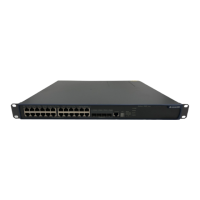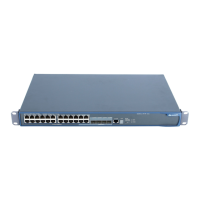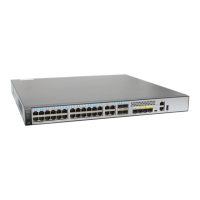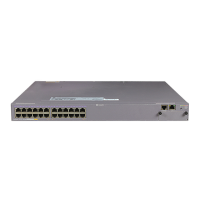Operation Manual – Routing Protocol
Quidway S5600 Series Ethernet Switches-Release 1510 Chapter 4 OSPF Configuration
Huawei Technologies Proprietary
4-6
DR BDR
DR Other DR Other DR Other
Figure 4-2 DR and BDR
IV. DR/BDR election
Instead of being manually configured, DR and BDR are elected by all the routers on the
current network segment. The priority of a router interface determines the qualification
of the interface in DR/BDR election. All the routers with DR priorities greater than 0 in
the current network segment are eligible "candidates".
Hello packets serve as the "votes" in the election. Each router writes the DR it selects to
the Hello packet and sends the packet to each router running OSPF in the network
segment. If two routers on the same network segment declare themselves to be the DR,
the one with the highest DR priority will be preferred. If their priorities are the same, the
one with greater router ID will be preferred. A router whose DR priority is 0 can neither
be elected as the DR nor be elected as the BDR.
Note the following points:
z DR election is required for broadcast or NBMA interfaces but is not required for
P2P or P2MP interfaces.
z DR is based on the router interfaces in a certain segment. A router may be a DR
on an interface and a BDR or DR Other on another interface.
z If a new router is added after DR and BDR election, the router does not become
the DR immediately even if it has the highest DR priority.
z The DR on a network segment is not necessarily the router with the highest priority.
Likewise, the BDR is not necessarily the router with the second-highest priority.
4.1.5 OSPF Packets
OSPF uses five types of packets:
I. Hello packet:
Hello packets are most commonly used OSPF packets, which are periodically sent by a
router to its neighbors. A Hello packet contains the values of some timers, the DR, the
BDR and the known peers.
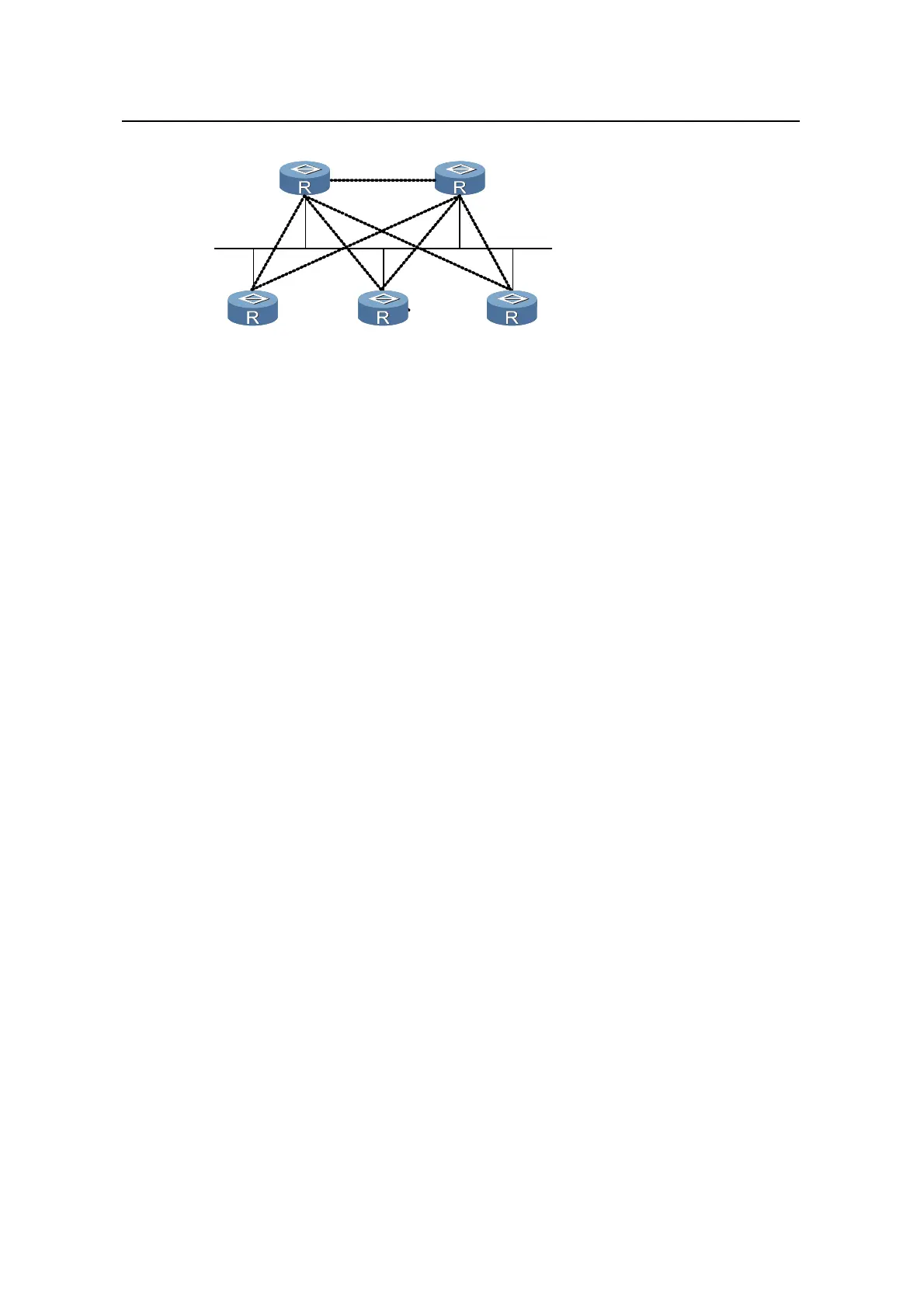